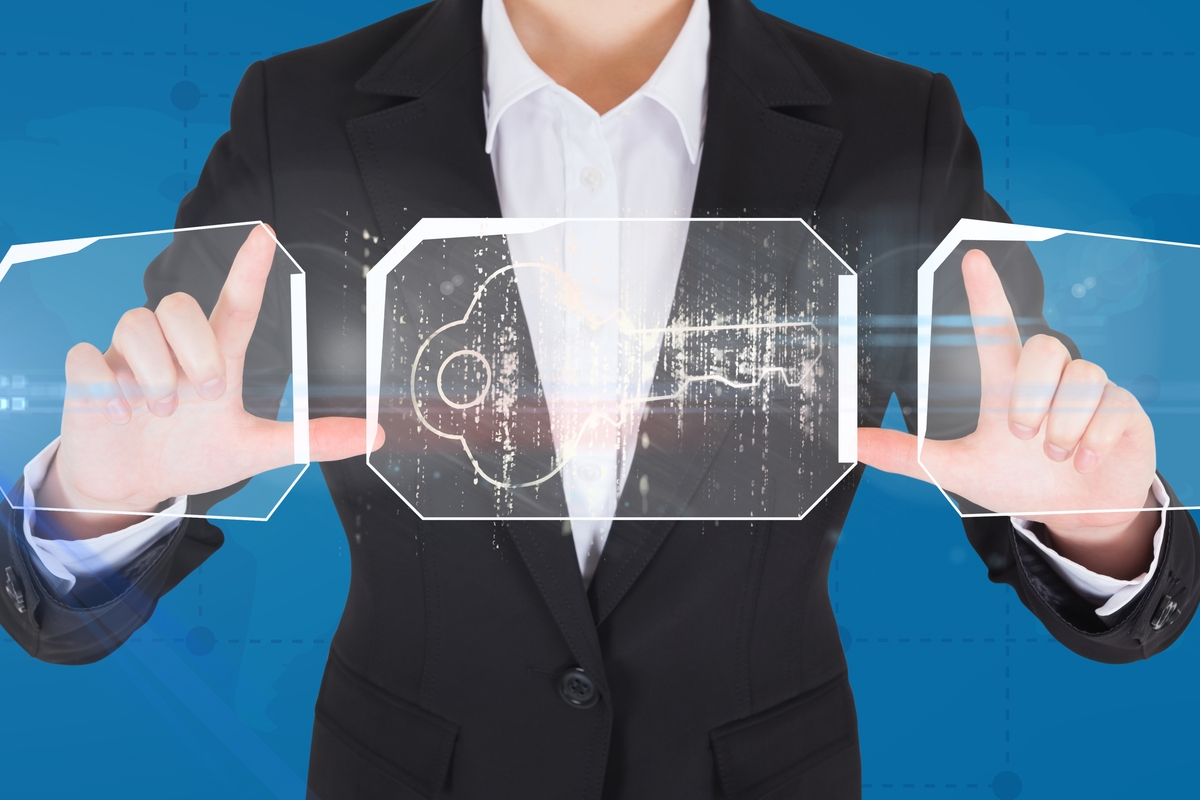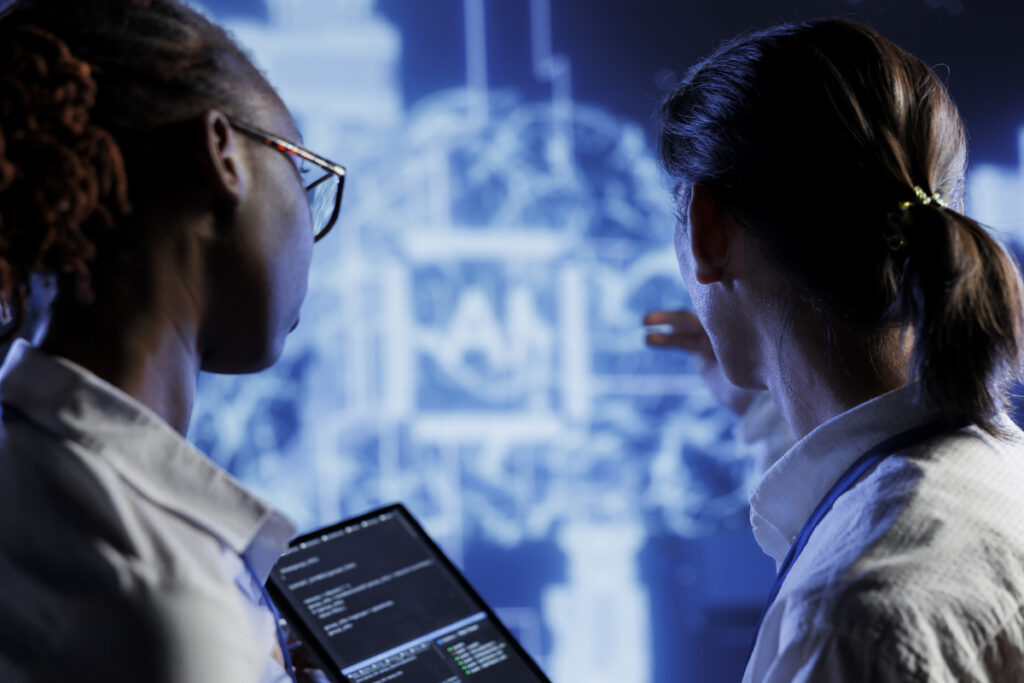It can be difficult to keep up with the deluge of new language and jargon that comes along with Industry 4.0 as it continues to propel digital transformation and the adoption of new technologies and processes across industries. Starting with our first topic, which explains the distinction between BMS vs Digital Twin, we will dissect some of these new and developing terms and concepts as they apply to the built environment in this new series of explainers on digital twins.
Among the terms that have been particularly popular in recent years is “Digital twin.” A BMS vs Digital Twin is not a completely novel idea, though. Although NASA and the manufacturing sector have long used the technology, it has only recently started to acquire popularity across a wide range of industries. Undoubtedly, a movement in the construction industry is gradually gathering traction to change how we plan, construct, and manage our buildings. A prevalent misperception is that a BMS and a digital twin are the same thing. But it’s crucial to acknowledge that there are a few crucial differences.
The industry standard for managing and keeping an eye on a building’s mechanical, electrical, and electromechanical systems has long been Building Management Systems (BMS). Facility managers can supervise everything from lighting to security systems to HVAC thanks to these streamlined operations. Nevertheless, the digital twin, a new technology, is expanding the possibilities of building management.
Table of Contents
What is a BMS?
With the help of a building management system (BMS), you can automate and streamline building operations and control every aspect of your building’s infrastructure from one central location. The Internet of Things and technology are used by modern building management systems to store and distribute data across devices. After that, you can use that data analysis to modify or enhance activities.
BMS systems normally concentrate on the structural and physical requirements of your facility. However, a lot of contemporary systems these days additionally integrate with property management and lease administration software to concentrate on the experiences of the personnel and inhabitants.
A BMS is an all-encompassing control system that automatically regulates non-GMP facilities. Monitoring, controlling, and optimizing building performance offers centralized management over building automation, enabling lifelong efficiency. Simplifying operations to make them easier to manage, monitor, and improve is BMS’s main goal.
Suggested article to read: Digital Twin Technology in Construction & Building; Guide to 2024
What is Digital Twin?
A digital twin is an electronic copy of a real-world physical product, procedure, service, or environment that mimics its appearance and behavior. A digital twin can be a virtual version of a real-world object, like a wind farm or jet engine, or it can be a larger object, like a city or a building. Alternatively, digital twin technology can be used to simulate processes or collect data to predict how they will work.
In its simplest form, a digital twin is a computer software that simulates the performance of a process or product using real-world data. The asset’s current state as well as previous data serve as the foundation for the simulation. These systems can use software analytics, artificial intelligence, and the Internet of Things (Industry 4.0) to improve the results. Virtual representations in the digital world can be created by transferring real-world data through the use of Internet of Things (IoT) sensors.
With the development of machine learning and the use of big data, these virtual models are now essential tools in contemporary engineering to spur creativity and enhance output. To put it succinctly, developing one can facilitate the advancement of strategic technological trends, avert expensive malfunctions in tangible assets, and test procedures and services utilizing sophisticated analytical, monitoring, and predictive skills.
A digital twin can have up to four layers of information and mimics every feature of the building, including how it operates:
- Physical layer, or the data “As built”
- Constructing the system layer (a BMS to provide data from systems and components in real-time)
- Individuals layer (providing behavioral information)
- Enterprise layer (IWMS software for property management and facilities procedures)
Suggested article to read: 13 Inspiring Digital Twin Examples
How does a Digital Twin Work?
Depending on the kind, a digital twin operates differently, but the general concepts are always the same. The requested data is collected by IoT sensors, smart products, and other computer equipment, and is subsequently fed into a digital interface. Depending on the use case, AI analysis of this data can swiftly uncover patterns and rank the most crucial information at that precise moment.
Once again, consistency is the crucial component. Any digital twin needs a steady data stream to operate correctly. Creating effective digital twins will be challenging, if not impossible, for organizations lacking the necessary IoT infrastructure.
1. Comprehending Component Twins
As the name implies, component digital twins show distinct parts of a product. Recall the operation of a motor, which consists of a large number of gears, screws, and other system components. However, not every piece requires a component twin, and teams typically focus on the sections that experience extreme stress, temperature fluctuations, or heavy use.
To make these specific parts better in later iterations of product design and refinement, component twins are utilized to measure and comprehend them better. That being said, if a company has the means, there is no reason why they cannot create a component twin for every part of the product they are developing.
Suggested article to read: Top 7 Digital Twin Software in 2024
2. Understanding Asset Twins
A product digital twin is also known as an asset twin. Because of this, the goal of this twin type is to portray the entire product rather than simply its parts. Product digital twins frequently focus on examining how these many parts interact with one another, giving the end user a clearer understanding of how the asset is performing over time.
3. Understanding Systems Twins
Many goods cooperate in a system just as many components cooperate in a product. These interactions are represented by system digital twins, often referred to as unit twins. For example, different hardware types usually operate together on the same production line to produce a single product. To help end users better understand where and how to invest in optimizations that will increase efficiency, a systems twin would measure and record these interactions.
4. Recognizing Procedure Twins
A process twin, which is one level above, reflects the data produced by all of these systems working together. To operate at maximum efficiency, process twins—which are among the most sophisticated digital twins now in use—need a strong digital infrastructure. A strong digital twin of a process might represent the operations of a complete manufacturing facility in terms of different hardware and even worker behavior.

Digital Twin Use Cases
It is hardly surprising that digital twins have a wide range of applications given their versatility. We want to remind readers once more that the fundamentals are always the same and that they constantly rely on IoT infrastructure, regardless of the specifics surrounding the twin’s use. Digital twins are a complex digital transformation project that is difficult to get started on and only works well when the right groundwork is done. Trying to avoid IoT is like trying to drive while blindfolded; you can crash at any time and never truly know what’s going on.
Suggested article to read: 13 Digital Transformation Tips in 2024
1. Digital Twins in Manufacturing
Digital twins have several uses in the manufacturing industry. They can be used for everything from component twin analysis to large-scale process twins that can track and represent an entire facility. The goal is usually the same, regardless of the kind of digital twin used: increased productivity.
By giving producers predictive insight about which machines will break and when digital twins in manufacturing help cut costs and downtime. This makes it possible to address problems before they become serious enough to cause production lines to stop.
2. Digital Twins in Automotive
Digital twins are also very beneficial for things that are released later. Digital twins can provide feedback to moving automobiles within the automotive sector, demonstrating precisely how different systems manage road conditions.
3. Digital Twins in Healthcare
There are several applications of digital twins in the healthcare industry. Some companies (Apple, Google, etc.) are tracking key elements of health, including heart rate and sleep habits, by creating basic people twins utilizing IoT scanners in wearables. But the effects extend beyond this to the actual medical equipment. In the healthcare industry, machine downtime can mean the difference between life and death. For this reason, the predictive analytics enabled by the use of digital twins considerably assist medical providers in not only identifying but also fixing issues with medical devices before they become life-threatening.
4. Digital Twins in Sustainability
There are numerous and significant ramifications for digital twins in terms of sustainability. Reducing waste and increasing machine durability through process optimization minimizes the need for replacement parts. But that’s just the tip of the iceberg.
Digital twins have advantages outside of manufacturing, such as lower energy use and improved environmental reaction prediction. For example, the idea of a smart city is a digital twin of a large-scale complicated place. Users may better direct energy flow, comprehend commuting patterns re-optimize infrastructure accordingly, and reduce material usage wherever feasible by building a digital twin of an entire metropolis.
Suggested article to read: Sustainable Construction | Sustainable Construction Technology
BMS vs Digital Twin, the Difference
BMS vs Digital Twin, even if they can work well together. The BMS is a network of physical objects with unique IDs that communicate with one another over the Internet. Conversely, digital twins are virtualized versions of systems or things that mimic their behavior and quantify their output by using data from the BMS sensors.
Digital twins exclusively consume data from BMS devices, while IoT devices can interact with digital and physical entities. This is one significant difference. Another distinction is that, unlike BMS devices, digital twins can forecast future states based on historical data. However, digital twins are frequently employed in conjunction with IoT devices due to their reliance on a network of networked things.
As we progress into the era of smart technologies and maybe smart cities, BMS vs Digital Twin will probably become more and more significant. Even while a lot of businesses have already begun utilizing them to cut expenses and increase productivity, much more work needs to be done before these technologies can realize their full potential.
BMS vs Digital Twin: Revolutionising Facility Management
The industry standard for managing and keeping an eye on a building’s mechanical, electrical, and electromechanical systems has long been Building Management Systems (BMS). Facility managers can supervise everything from lighting to security systems to HVAC thanks to these streamlined operations. Nevertheless, the digital twin, a new technology, is expanding the possibilities of building management.
Elevate building management with the idea of a digital twin. A virtual version of a physical object, in this case, a building, is known as a digital twin. With the use of this technology, people may see a building’s current circumstances in greater depth and with greater accuracy. In contrast to a conventional BMS, a digital twin does not require simulation to detect problems and forecast future events.
A digital twin gives an overall picture of the building’s activities by combining several operational tasks into a single platform. It interacts with every piece of machinery and system in the structure to give a more complete, intricate image than a building management system (BMS) could.

BMS vs Digital Twin, The Advantages of a Digital Twin
The benefits of using a BMS vs Digital Twin are manifold.
Smarter Building Management: The aforementioned data is compiled by the digital twin to create a virtual image of the building’s current status. Rather than examining data from several sources on separate reports, the digital twin allows for performance monitoring, trend analysis, and building error detection all in one location. Twins can also be used to test other hypotheses, such as how a new asset would affect air quality or how the building’s cooling system will handle an increase in occupancy. This lessens the effect of interruptions or drops in the “Live” building environment’s performance.
Notably, Tesla builds a digital doppelganger of each vehicle it sells to track each one’s status and spot any unusual changes. When a problem is detected, a software update is sent to the affected vehicle; alternatively, if a garage is required, instructions on how to fix it are given, minimizing any inconvenience or downtime for Tesla owners.
Enhanced Precision and Detail: A standard Building Management System (BMS) cannot match the granular perspective of a building’s real-time conditions that the digital twin may provide. This refined information boosts asset performance and operating efficiency because facility managers can make better decisions.
Predictive Maintenance: A digital twin identifies potential issues before they escalate into costly problems. Long-term cost-effectiveness is ensured by this predictive capability, which not only saves time but also lessens the financial strain of unplanned maintenance and system outages.
Sustainability Champion: The advancement of sustainability projects is greatly aided by digital twins. They offer accurate information on resource usage, trash production, and energy use. Equipped with this data, site managers may put specific plans into place to cut down on energy use, minimize carbon emissions, and improve sustainability all around.
Compliance Facilitator: It is simpler to fulfill the strict standards of green building certifications like LEED or BREEAM when using the comprehensive data that a digital twin provides. BMS vs Digital Twin, this compliance facilitation offers several advantages, particularly in a period where sustainability is now required rather than voluntary.
Integration of Operational Functions: A digital twin’s capacity to combine several operational functions onto a single platform is one of its most revolutionary features. This all-encompassing method offers a thorough understanding of the building’s functioning and a degree of supervision and control that is unmatched by a conventional BMS.
Conclusion
Even if the construction sector has benefited much from a BMS, the introduction of digital twins marks a substantial advancement. Digital twins have the potential to completely transform the way we manage and use buildings by providing a more comprehensive, accurate, and thorough perspective of building operations.
The aforementioned data is compiled by the digital twin to create a virtual image of the building’s current status. Rather than examining data from several sources on separate reports, the digital twin allows for performance monitoring, trend analysis, and building error detection all in one location. Twins can also be used to test other hypotheses, such as how a new asset would affect air quality or how the building’s cooling system will handle an increase in occupancy. This lessens the effect of interruptions or drops in the “Live” building environment’s performance.
Digital twins are based on BMS and do not replace it, unlike certain new technologies that naturally replace others, such as IWMS, which replaces spreadsheets and paperwork. While both are based on 3D models, digital twins show a higher level of modeling. For instance, the BMS model assists FMs wishing to use sensors in location planning and helps them visualize the data obtained from them. The FM staff can identify and address issues more quickly as more data is included in the model, even before building occupants become aware of them.
Facility managers can develop virtual versions of buildings or systems with the help of digital twins. With the help of this digital duplicate, real-time data, behavior, and interactions can be captured for use in performance analysis, predictions, and simulations. Digital twins offer a comprehensive picture for well-informed decisions and improved operations when seamlessly connected with BMS, which is in charge of managing building services like HVAC and lighting.
Suggested article for reading:
Digitalization in the Construction Industry: Guide to 2024
Building Digitalization; Comprehensive Guide 2024
Resources:
PTC | SWG | Challenge | Linkedin | TwinView | IESVE | ButterflyMX | InfraSpeak | TWI-Global | Unity
For all the pictures: Freepik




